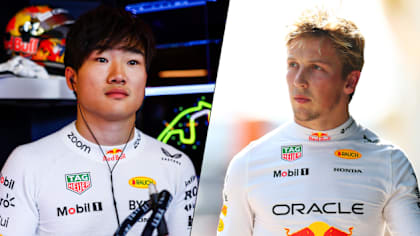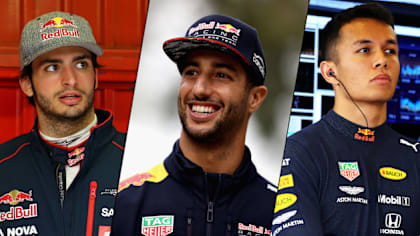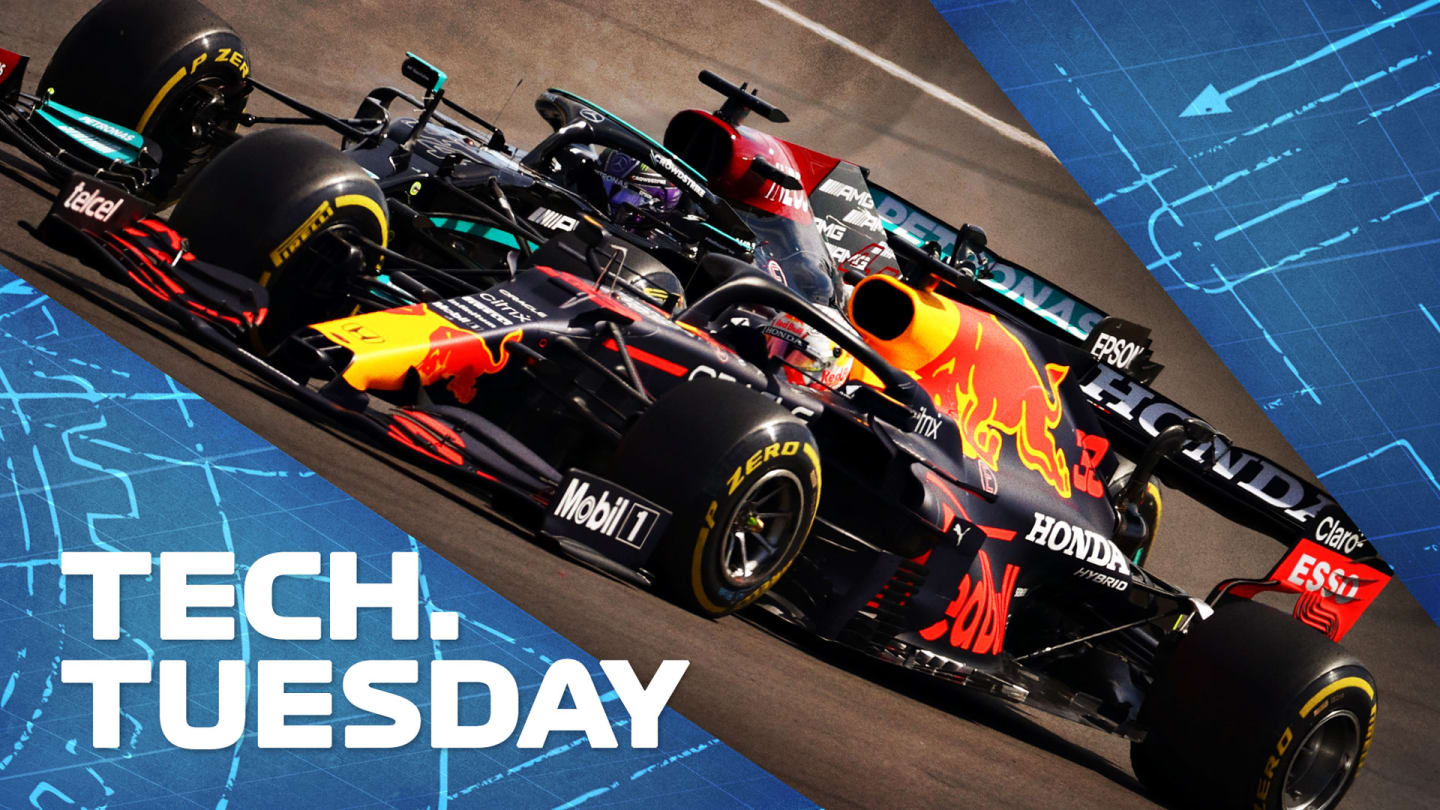
Technical
Power struggle: How Honda caught up with Mercedes – and how the Silver Arrows fought back

Share

The race for championship honours isn't just being fought out on track between Lewis Hamilton and Max Verstappen, but also back at the factories and HQs of Mercedes, Red Bull, and Honda. In this week's Tech Tuesday, Mark Hughes looks at the battle to be top dog in the power unit stakes...
The development battle between Mercedes and Red Bull which may determine the outcome of the world championship has been quite visible – with a very extensive series of aerodynamic upgrades on the RB16B and significant new bodywork pieces on the W12 at Imola and Silverstone. But what this fight is also about is the competition between Mercedes HPP and Honda in which can deliver the best power unit.
Here the competition is less visually apparent as the crucial components lie secreted beneath the bodywork. Although in-season changes to the power units are limited by the homologation restrictions and the three engines per season rule, major developments to each of these standard-setting units came during the off-season. Both Red Bull and Mercedes are racing this year with significantly more power than in 2020.
What is behind these advances? In the case of Honda, the changes are extensive. The Honda RA621 in the back of the RB16B is both smaller and more powerful than the preceding PU. It was originally conceived as the power unit for the new aero generation of cars scheduled for this year. But when those regulations were postponed by a year in reaction to the pandemic, so the new power unit was too.
Subsequently, Honda announced their plan to pull-out from F1 at the end of this year and it seemed the new 621 would never see the light of day.
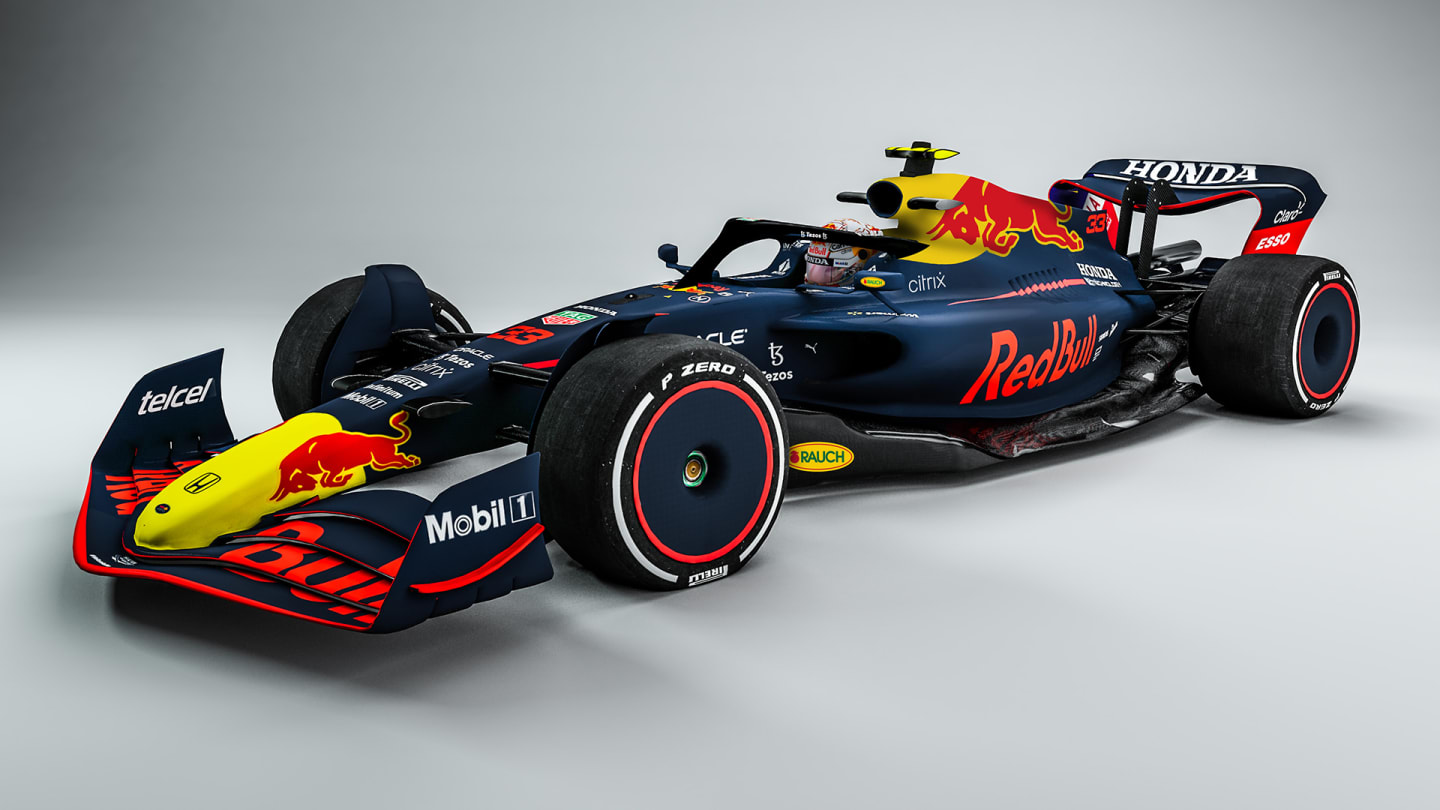
The 2021 Honda power unit was to be used in the new generation of F1 cars, which has been delayed until 2022. Above is a render of Red Bull's livery on the 2022-spec car
Fortunately, Yasuaki Asaki, the director of Honda R&D in Sakura, managed to convince the boss that in their final year of participation they should be allowed to unleash the new design, and that they should give everything to go out on a high. So, it was returned to its original 2021 introduction, even if no longer in the new aero car.
Key to its whole concept has been a reconsidered order of priorities between the power produced by the PU’s internal combustion engine and how much is recovered. This has brought a cascading series of benefits.
“The power unit in modern F1 is a very complex system that uses the energy from the exhaust gas to generate electricity,” explained Asaki at the engine’s launch. “So it is not enough to just aim at increasing the efficiency and power of the engine… The law of conservation of energy says that if you increase the horsepower of the crank, the energy of the exhaust will decrease. That's what we’re trying to address with the new framework, so we can increase both.
“MGU-H is a system that regenerates energy from exhaust gas. The amount of power recovered [allowed by regulation] of this MGU-H is unlimited. For this reason, that is the heart of the game. The turbo boost pressure is raised by the electric motor, and when the waste gate opens, the exhaust pressure drops and power comes out. It is called e-boost, but the usage is to aim for control that maximises competitiveness with complicated electrical management.”
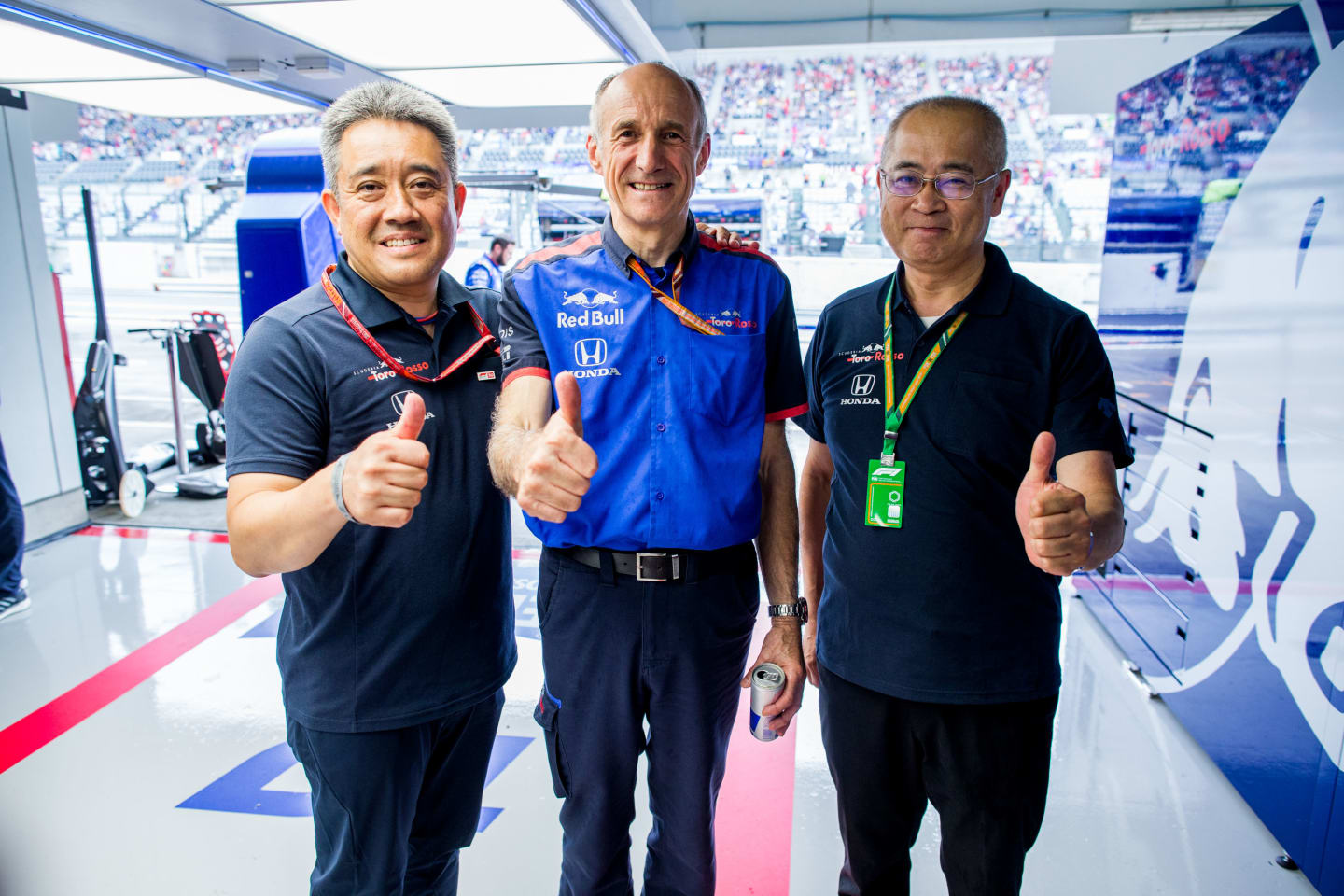
Honda Racing Head of Power Development Yasuaki Asaki (R) with AlphaTauri (then-Toro Rosso) boss Franz Tost
The implications of that were that the internal combustion engine could live with an increase in exhaust back pressure (the resistance to flow of the exhaust gases). Usually increases in power from the combustion chamber will increase the back pressure but so long as the gains in the combustion chamber are greater than the losses from the increased back pressure, all is good. Until it arrives at a point of diminishing, and eventually negative, returns.
But a re-assessment of how much back pressure was tolerable (because of the use made of the back pressure by the new software of the MGU-H) allowed the Honda PU designers to fundamentally re-configure the combustion chamber.
Valve angles were increased which as well as changing the power characteristics of the engine also allowed the cylinder head to be shallower and the camshafts to be sited lower (and reduced in diameter, reducing the frictional losses). Different material for the block also allowed the gap between the cylinders to be smaller, thereby making the engine yet-more compact.
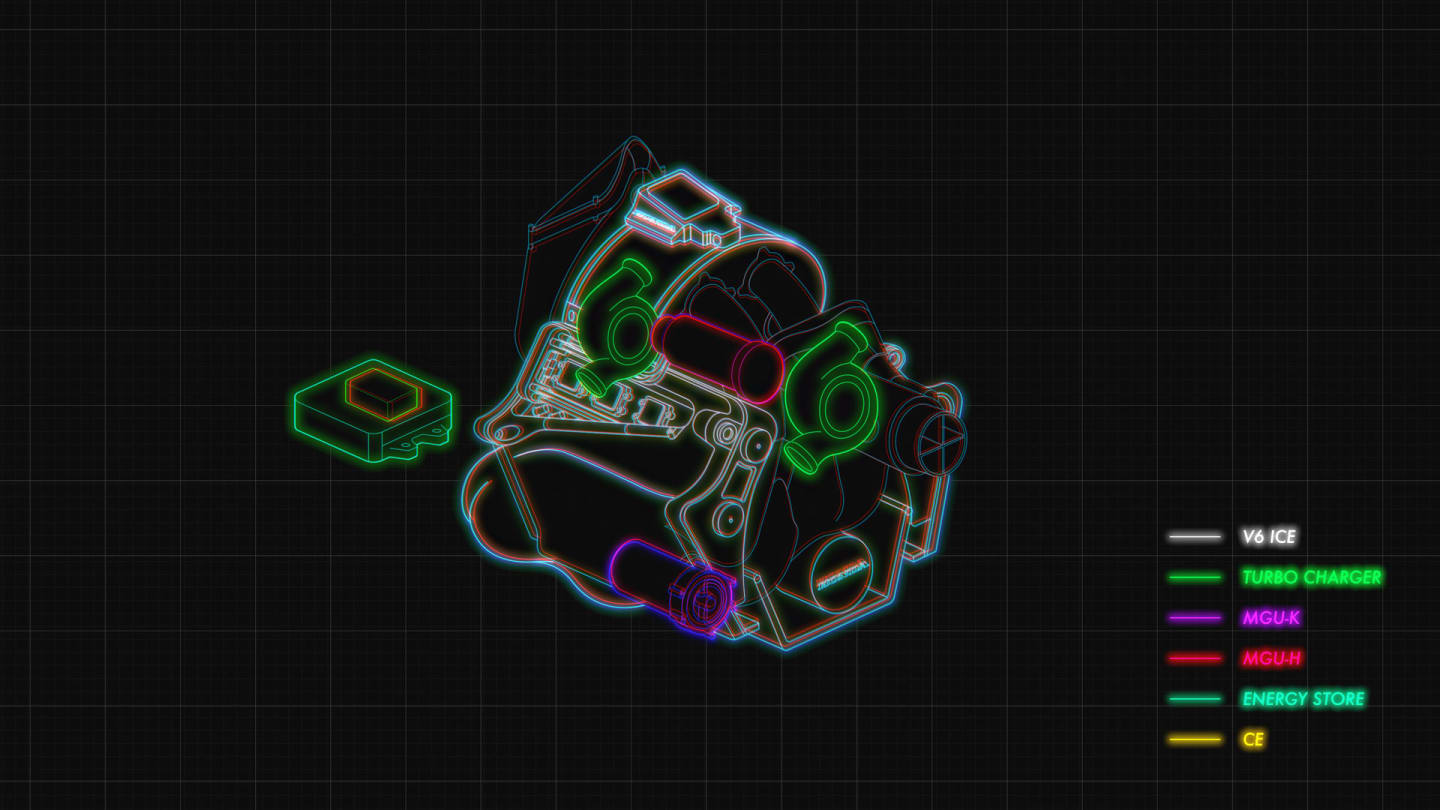
A diagram of the RA621H showing the new layout – courtesy of Honda.Racing
The result is a power unit even smaller than the original Honda ‘size zero’ of 2015 (which achieved its compactness through having the turbo between the vee of the engine), but even more powerful than last year. It is also significantly more powerful than the 2020 Mercedes unit. So, for Mercedes, it was essential that they too found significant power unit gains with their new M12E unit.
These have been delivered in a quite different way from those of Honda. We have less detail of the internal changes, but we do know that the infamous engine cover bulge on the Mercedes (and Aston Martin, below) is related to a significant part of the power increase. The bulge is to clear what is believed to be a special chamber within the intake plenum where the air which will be fed to the combustion chamber is prepared. The air in this chamber within the plenum is ‘super-cooled’.
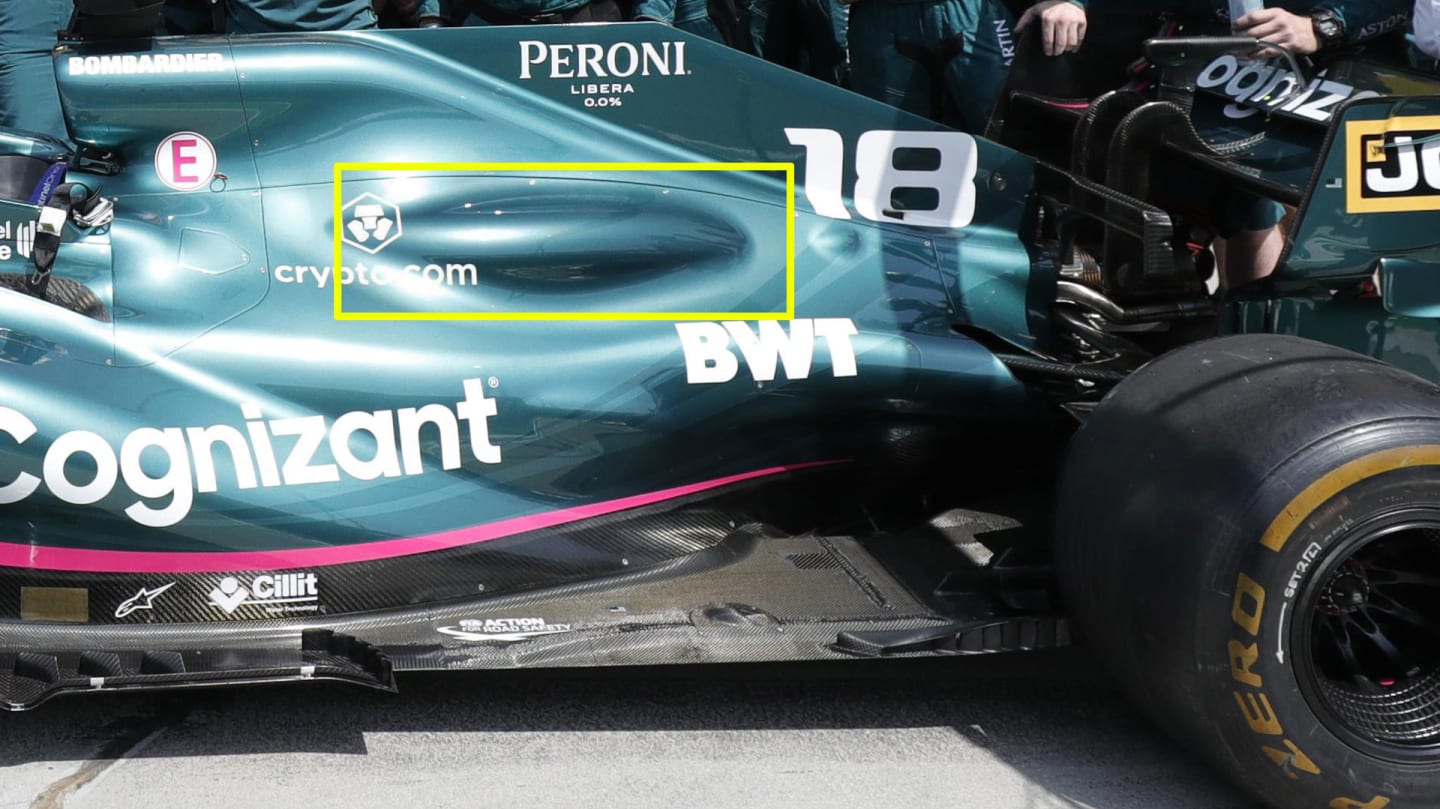
The distinctive bulge on the Aston Martin AMR21
Super-cooling is the process whereby a liquid can be cooled below its nominal freezing temperature but still remain a liquid. Some super-cooled coolant is believed to run in the walls of this chamber, making the air inside it even cooler. The cooler the air, the greater the oxygen content and the more explosive it will be when mixed with the fuel.
Mercedes also re-assessed how to better use the heat rejection of the turbocharger. “Those changes are probably the most striking when it comes to crank power and the performance of the power unit,” said Mercedes HPP boss Hywel Thomas at the launch of the W12. A new type of alloy has been used for the engine block, in the interests of greater reliability as the strains imposed by the ever-greater power year-on-year had begun to tell in 2020.
READ MORE: Red Bull approached 100 Mercedes staff for engine project ‘and they got 15’, says Wolff
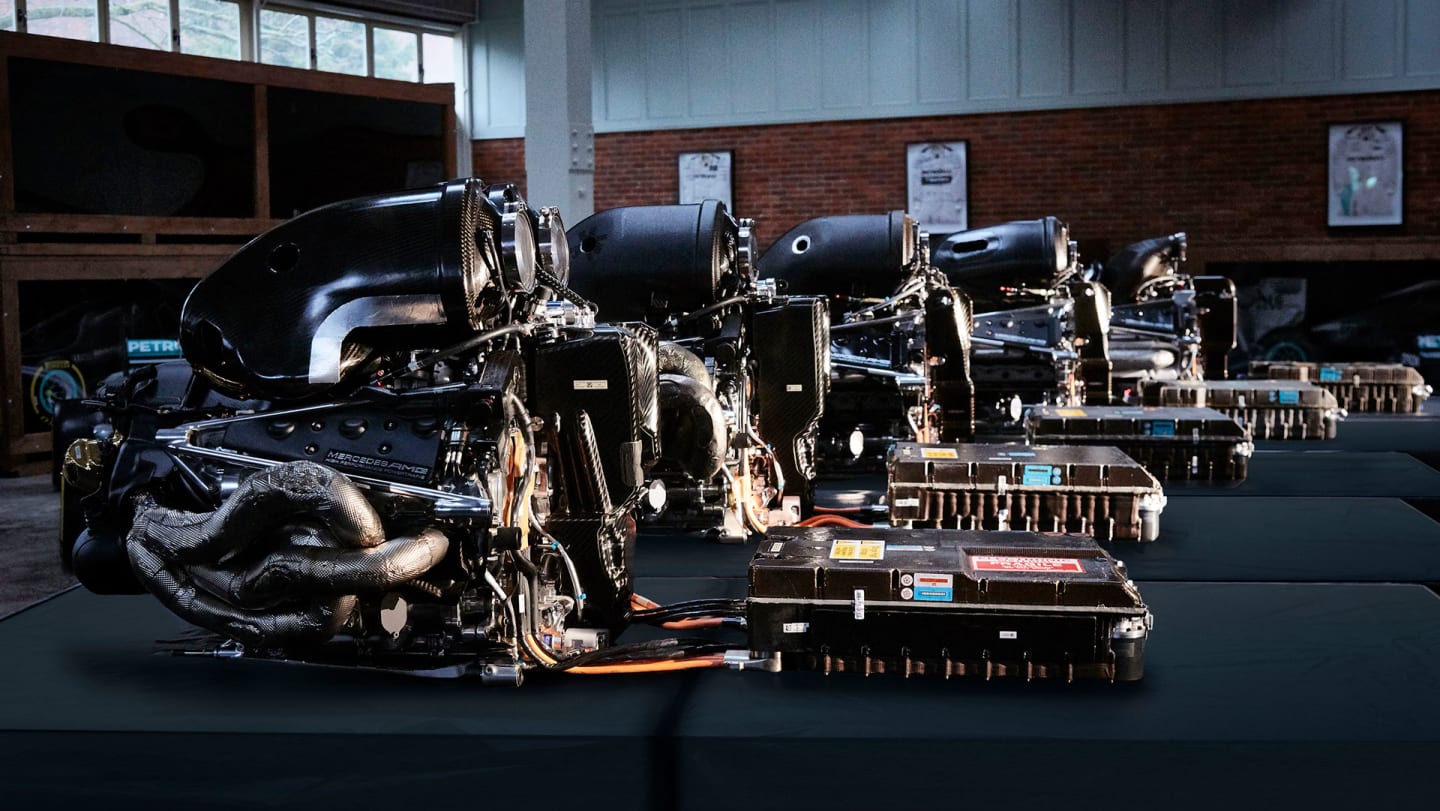
Mercedes HPP's first-five hybrid-era engines with the 2018 unit on the left. The changes from 2018-present are thought to be significant
The variable length inlet trumpets – which are standard on all F1 engines and which optimise the volume of inlet air according to the load and torque demand – have been made more compact on the M12E by an ingenious snail shell-like geometry.
How these improvements have balanced out between the two power units has been a fascinating part of the competition this season. There is no definitive agreement on which is the more potent and it's close enough that differing levels of downforce chosen by each team at each circuit can muddy the waters.
In the France/Austria series of races it appeared as if the Honda had the edge. At Silverstone the Mercedes appeared to be marginally ahead. It is that close, and it will be fascinating to see how this battle plays out in the second half of this gripping season.
YOU MIGHT ALSO LIKE
News ‘It’s tough’ – Lawson shares first message after Red Bull seat swap with emotional social media post
News Tsunoda to replace Lawson at Red Bull from Japanese GP as New Zealander drops down to Racing Bulls
News ‘We have a duty of care to protect and develop Liam’ – Horner opens up on decision to replace Lawson at Red Bull
Feature IN NUMBERS: How Verstappen’s team mates fared against him with Tsunoda the latest to step up


